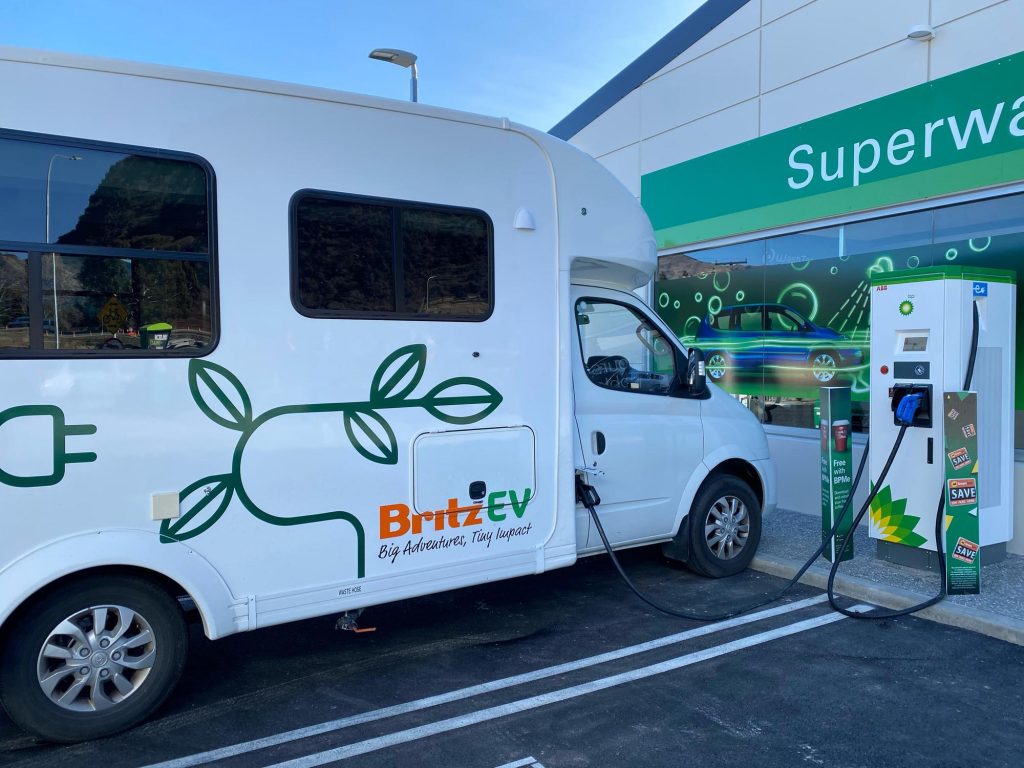
New Zealand is getting serious about accelerating the adoption of electric vehicles, with a Clean Car Discount, now offering as much as $8,625 off the price of an EV. By comparison, Australia’s best EV incentive is from Victoria, which currently offers $3,000 to increase uptake, while other regions like the ACT offer free rego for a couple of years.
In Aussie dollaroos, the NZ $8,5625, works out to be A$7,978.20, a significant reduction to the price of EVs with cars under A$80k being eligible. For electric vehicles first registered between 1 July and 31 December 2021, a simple flat-rate rebate will apply. NZ are also mandating that cars need to achieve a 3-star or higher safety rating to be eligible.
New Zealand’s transport minister Michael Wood, shared the following graphic today, which highlights the Nissan Leaf and Tesla Model 3 fully electric vehicles, which attract the biggest discounts of $8,625. This also applies to the Hyundai Kona EV and any others that arrive before the end of the scheme.
The NZ policy focuses on ensuring vehicle owners migrate to cleaner vehicles which actually include Hybrids like the Mitsubishi Outlander (PHEV) and Toyota Prius (PHEV) but at a lower discount of $5,750.
To fund this policy, NZ has taken a very aggressive approach in transitioning to clean energy vehicles, which shows their level of commitment and seriousness around the issue. Like Australia, NZ imports their vehicles from manufacturers overseas, and under the Clean Car Programme 2022, those which pollute the most will be charged, as much as $5,175 for a new import and $2,875 for a used import. Vehicles likely to incur a fee include the Ford Range (NZ$2,780), Toyota Hilux (NZ$2,900) and Mitsubishi Triton (NZ$2,780), along with the Kio Sportage (NZ$1,230) and Mitsubishi ASX (NZ$540). The worst of these, the Ranger emits 234 CO2 per km.
As I said, taxing those buying ICE vehicles in 2022 is aggressive, with many expecting schemes that charge ICE vehicles, to be a lot closer to 2025, as we are hopefully at the tail end of ICE vehicle sales. If the world is to meet its 2050 goals, it is important that over the next decade and change, ICE vehicle sales end, as the life of many vehicles is up to 15 years.
By implementing a policy like this in place, it gives you levers, on one hand, you have the incentive to encourage the behavior you want (new EV sales), while placing downward pressure on the behaviour you want to stop (ICE sales). Over time, the amounts could be adjusted, based on how successful the transition is and in theory, the scheme won’t have a cost to the Government, making it sustainable over the long-term.


So far, we’ve seen no direct assistance from Australia’s federal Government for EVs, which has left Australia falling down the international charts for new EV sales. If Australia was to follow New Zealand with an agressive EV policy and offer similar incentives, it could have a very meaningful impact on adoption here.
Today, a Tesla Model 3 SR+ costs A68,094 in Victoria. With a discount of A$7,978.20 (NZ $8,5625), you could into a Tesla for as little as A$60,115.80. An enterprising manufacturer would look at this price tag, check their margins and make an adjustment to come in at under $60k. While it may not sound like much of a difference, still a premium price for many, a lot more people buy cars in the $50-60k price bracket, than do in the A$60-70+.
If we consider the other EV options, the MG ZS EV starts at A$43,990 and with a discount of A$7,978.20 (NZ $8,5625), you could have an EV in your driveway for as little as A$36,011.80. The same story is true in this example, the volume of buyers in the A$30-$40k bracket, is substantially more, dramatically increasing your chances that new car buyers will consider an EV for the first time, helping accelerate the transition to clean energy vehicles.
In the best situation, we’d have a national approach to this, rather than a fragmented state and territory-based approach that we have today. This is problematic on a number of fronts, but mainly due to the politics of having different political parties in charge of different states. This transition should be above politics and therefore have bipartisan agreement that we need to move and move fast, because in 2021, to have <1% of our new vehicles sold being EVs, is just unacceptable.
For the average Joe it won’t matter, but as a country, if we have ambitions of reaching 100% transition by 2025, then we have to get moving now. If it takes a change of Government at the federal level, we’ll be waiting a long time, so I encourage everyone involved in this challenge, to work collaboratively and cooperatively with all parities to help change minds and win hearts to make Australia the best country we can be.
I am proud that Australia has led the world in technology adoption over many decades, but when it comes to technology under the hood, we are well and truly behind.








Being from Australia, I was keen to understand the charging situation in New Zealand and despite being a fairly small country in terms of land mass, they have more than 250 charging locations with CCS connectors (used by a majority of EVs) and 12 Tesla Supercharging locations.
Check out Plugshare.com for more details.

I won’t believe anyone who says a Tesla can’t tow anything after seeing its load in that picture.
WA offer $3.5k rebate.